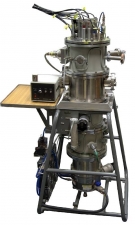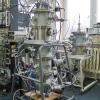In search for a more efficient radiotherapy
2015.06.08 11:06 - adminThe “Biologically Weighted Quantities in Radiotherapy” (BioQuaRT) joint research project within the framework of the European Metrology Research Programme (EMPR) has come to end. Scientists associated in European Association of National Metrology Institutes (EURAMET) were searching for new metrology methods that could help to optimize planning of cancer radiotherapy treatment.
How to irradiate tumours to effectively eradicate them and simultaneously not to damage adjacent healthy tissues? This challenge is faced by radiation therapists every day. It is well known that the commonly heard “absorbed radiation dose” notion is not sufficient to determine efficiency of a given radiotherapy treatment: biologic effects depend on kind of radiation and its energy. If dosimetry is to be useful in life sciences, it must take into account both physical and biological effects.
„Our objective was to develop measurement/simulation techniques capable to yield information on interaction of ionizing particles with matter at various points of their path, and to find correlations between those interactions and biological effects caused by them in individual living cells” – explains Dr. Stanisław Pszona from NCBJ Interdisciplinary Applications of Physics Division – „We have studied interactions on path segments from 2 nanometres (DNA helix diameter) up to 20 nanometres (DNA supercoiled to a nucleosome)”.
Świerk scientists entered that research field – called nanodosimetry – already in 70’, long before nanotechnology blossomed. However, development of nanodosimetric methods boomed only recently due to such devices as Jet Counter developed in NCBJ. The Counter is currently one of just three devices in the world that can be used to study interactions of ionising radiation with sub-cell biological structures. Experimental data obtained in NCBJ will help to model nanodosimetric phenomena, a challenging task for contemporary dosimetry. Results of such works should help to optimize planning of cancer radiotherapy treatment.
The first phase of the BioQuaRT joint research project has just come to end after 3 years of accomplishment. The project phase was worth 3.5 million Euro. The obtained results are so promising that EURAMET has decided to continue financing of the works.
Cancer occurrence rate doubled within last thirty years. A growing demand for various radiotherapy methods dedicated for specific cancer types (conventional radiotherapy based on high-energy photon/electron beams) and demand for various non-conventional radiation beams is only natural medicine’s response. Beams of charged particles (hadrons, protons) are much more effective and safe in treatment of tumours located close to highly-sensitive healthy organs than photon beams. Number of patients treated in proton therapy centres all over the world increased from 3,000 in 2005 to about 14,000 in 2013.



















